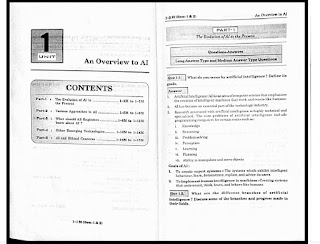Microprocessor
There are three types of microprocessors namely, CISC, RISC, and EPIC. Before learning about them. Let us understand what is a microprocessor.
A microprocessor is basically the brain of the computer. We can also call it simply a processor or CPU. Furthermore, a microprocessor is basically a computer processor that is mounted on a single IC (Integrated Circuit). It means that all the functions of the processor are included on a single chip. Furthermore, the basic task of a microprocessor is to input the instructions from the memory, decode, and process them and produce the output. It performs three basic tasks while processing the information.

CISC, RISC, and EPIC
We have three basic types of microprocessors. They are as follows:
1. CISC (Complex Instruction Set Computer)
As the name suggests, the instructions are in a complex form. It means that a single instruction can contain many low-level instructions. For example loading data from memory, storing data to the memory, performing basic operations, etc. Besides, we can say that a single instruction has multiple addressing modes. Furthermore, as there are many operations in single instruction they use very few registers.
Examples of CISC are Intel 386, Intel 486, Pentium, Pentium Pro, Pentium II, etc.
2. RISC (Reduced Instruction Set Computer)
As per the name, in this, the instructions are quite simple, and hence, they execute quickly. Moreover, the instructions get complete in one clock cycle and also use a few addressing modes only. Besides, it makes use of multiple registers so that interaction with memory is less.
Examples are IBM RS6000, DEC Alpha 21064, DEC Alpha 21164, etc.
3. EPIC (Explicitly Parallel Instruction Computing)
It allows the instructions to compute parallelly by making use of compilers. Moreover, the complex instructions also process in fewer clock frequencies. Furthermore, it encodes the instructions in 128-bit bundles. Where each bundle contains three instructions encoded in 41 bits each and a 5-bit template. This 5-bit template contains information about the type of instructions and that which instructions can be executed in parallel.
Examples are IA-64 (Intel Architecture-64), etc.
Characteristics of CISC, RISC
Characteristics of CISC are as follows:
- As the instructions are complex hence, the decoding of instructions is also complex.
- The size of instructions is greater than the one-word size.
- Instruction can take more than one clock cycle to execute.
- The number of registers is less since most of the operations are performed in memory itself.
- The address modes are also complex.
- Data types are more in number.
Characteristics of RISC are as follows:
- As the instruction is simple hence, the decoding of instructions is also simple.
- The size of instructions is under the one-word size.
- Instruction takes one clock cycle to execute.
- The number of registers is more.
- The address modes are also simple.
- Data types are less in number.
- Can be used for pipelining.
Advantages of CISC, RISC
Advantages of CISC are as follows:
- Microprogramming in CISC is as easy as the assembly language implementation.
- The number of instructions for performing operations is less in number. Hence, the memory usage is low. Moreover, time consumption is also less.
Advantages of RISC are as follows:
- Instructions are simple hence easy to understand and decode.
- The instructions complete in one clock cycle therefore, CPU can handle multiple instructions at a time.
- Designing the RISC processors is easier in comparison to the CISC processors.
Differences Between CISC and RISC
The differences between CISC and RISC are as follows:
| RISC | CISC |
| It focuses on the software. | It focuses on the hardware. |
| Uses the hardwired control unit. | It uses a hardwired as well as a microprogrammed control unit. |
| Uses transistors for more registers. | Transistors are used for storing the complex instructions. |
| The instructions have a fixed size. | The size of instructions vary. |
| It performs only register to register arithmetic operations. | Besides the register to register operations, it can also perform register to memory or memory to register operations. |
| Fewer registers are used. | It requires more number of registers. |
| As the instructions are individual the code is large. | Multiple operations are present in single instruction hence, the code is small. |
| Executes in one clock cycle. | Takes more than one clock cycle for execution. |
| Instructions have a size of one word. | The size of instructions is greater than the one-word size. |
| Examples are IBM RS6000, DEC Alpha 21064, DEC Alpha 21164, etc. | Examples of CISC are Intel 386, Intel 486, Pentium, Pentium Pro, Pentium II, etc. |
Frequently Asked Questions (FAQs)
Q1. What is a microprocessor?
A1. A microprocessor is basically a computer processor that is mounted on a single IC (Integrated Circuit). It means that all the functions of the processor are included on a single chip.
Q2. What are the types of microprocessors?
A2. It has basically three types, they are as follows:
- CISC (Complex Instruction Set Computer)
- RISC (Reduced Instruction Set Computer)
- EPIC (Explicitly Parallel Instruction Computing)
Q3. Give examples of CISC, RISC, and EPIC.
A3. Examples of:
- CISC are Intel 386, Intel 486, Pentium, Pentium Pro, Pentium II, etc.
- RISC are IBM RS6000, DEC Alpha 21064, DEC Alpha 21164, etc.
- EPIC is IA-64 (Intel Architecture-64), etc.


